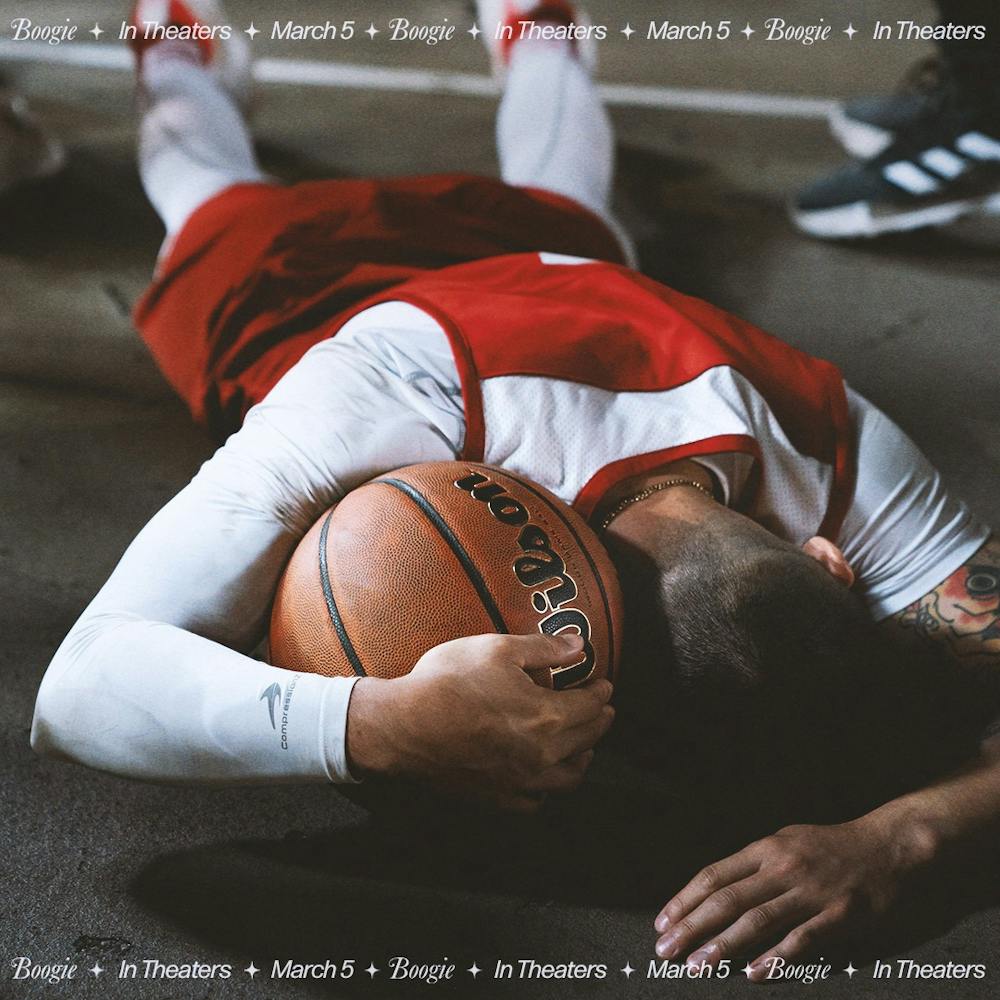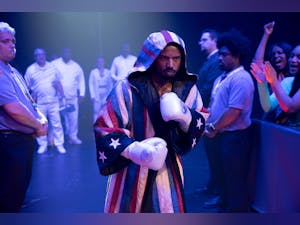From: Silver Screen
‘Boogie’ takes a Taiwanese American twist to the classic coming-of-age story

“Boogie” begins with the vibrant, bustling streets of New York City’s Chinatown paired with the pulse of rap music in rhythm with the opening credits. It immediately sets the mood: culture and identity are not monoliths, but blends.
This coming-of-age film is the passion project and directorial debut of Eddie Huang, known for his memoir-turned-TV show “Fresh Off the Boat.” Huang, who also wrote the film, succeeds in telling a somewhat cliche story that surprisingly subverts expectations, but the unbalanced pacing and awkward sequencing of scenes mark a filmmaking journey that has only just begun.
Alfred “Boogie” Chin (Taylor Takahashi) is the son of Taiwanese immigrants and dreams to play in the NBA. For his senior year of high school, he transfers to City Prep in order to get noticed by university scouts. His father (Perry Yung) shares Boogie’s dream and motivates him, but gambles and does little financially to contribute. Instead, Boogie’s mother (Pamelyn Chee) actively contacts different universities for scholarships, as they cannot afford to pay for full tuition.
There’s an incredible dynamic between these three characters that speaks to the power of culture and tradition. Every interaction between this family feels genuine as cultural beliefs and American exceptionalism clash with force, creating compelling drama that fuels the film’s narrative.
Boogie is a wisecracking, rash, confident loudmouth who’s the best basketball player at City Prep. It’s interesting then to see how culturally respectful Boogie is and how he still holds on to his family’s ideals. A powerful moment of the film is when Boogie is forced by his father to apologize to his coach for being selfish on the court. Boogie sits on his knees and bows his head, while his father stops the coach’s interjection and says, “Please, this is our culture.”
As he navigates high school, young love and a heated on-court rivalry, Boogie is the center of attention, and the main catalyst for every narrative beat. This focus only brings Takahashi’s underwhelming and underacted performance front and center, and it's clear that he’s not an experienced actor.
But more interestingly, Takahashi sometimes serves as a vessel for Huang’s thoughts on certain issues like the model minority myth. In one scene, Boogie critiques “The Catcher in the Rye” in his English class because like anything he’s ever read in high school, he’s never been able to relate to it.
Tensions rise when Mrs. Chin recruits a scout named Melvin (Mike Moh) to help find Boogie deals and opportunities. Melvin goes behind Mr. Chin’s back to secure a deal for Boogie to play basketball in China, and Boogie’s future changes dramatically.
Asian American films are finally taking the stage in mainstream media, with recent examples like “Minari,” “Always Be My Maybe” and “The Farewell.” While it might not reach the cinematic heights of those examples, “Boogie” is still able to stand out on its own as a statement of how we view this incredibly diverse group of people.
In this film, we get different Chinese American perspectives and characters who vary in culture, language and behavior. Mandarin is not only used frequently in dialogue, but also as a narrative tool that separates the Chin family from Melvin, who only speaks English.
For a directorial debut, “Boogie” is impressively well refined. While it may sometimes come off as a vanity project — there’s a shot that includes Huang’s restaurant Baohaus — it’s clear that Huang made this film to say something more.
Some scenes are visually immaculate with their use of light and color, and draws inspiration from classic Hong Kong cinema. Jarring camera angles don’t feel out of place because they allow a full appreciation of the intricately designed spaces the film’s characters occupy. The basketball scenes are perfect: fast-paced, tightly edited shots that match well with the hip-hop soundtrack.
Coming-of-age films have tried and true formulas, and “Boogie” doesn’t stray far. What sets it apart, however, is its blend of voices and cultures that make it so uniquely American. The film’s exploration of family, tradition and expectation resonates with audiences in deeply personal ways.
Like his restaurants, books and TV show, “Boogie” is a shout to the world that this is who Huang is. Most importantly, “Boogie” continues to open the door for Asian American filmmaking, and it’s a promising start to Huang’s film career.
Like Boogie in English Class, I’ve never been able to connect with a coming-of-age film. But through this film in different ways, I finally saw myself.
“Boogie” released on March 5, 2021.




